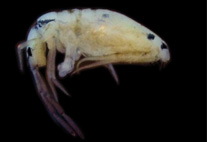Abstract
The rate of discovery of new species of Reduviidae (Insecta: Heteroptera) from North America has slowed in the 21st century. This is not surprising, given the conspicuousness and large distribution ranges of many Nearctic assassin bug species that are often collected using general insect collecting techniques. Nevertheless, biodiversity discovery in Nearctic Reduviidae is ongoing. We here describe a new species, Reduvius frommeri, n. sp., from Southern California that is so far only known from a small endemic range in the Sonoran Desert. With about 197 species, the genus Reduvius Fabricius is one of the most speciose genera of Reduviidae. The majority of species occur in arid- and semi-arid areas in the Afrotropical, Oriental, and Palearctic regions and only three species are New World endemics. A fourth species that occurs in the United States, Reduvius personatus Fabricius, is cosmopolitan and has been introduced to the Western Nearctic. The new species of Reduvius stands out amongst the four other Nearctic Reduvius species by the small size and pale body coloration with a contrasting dark head. Image plates documenting habitus and selected morphological details and maps are provided for the five species in the Nearctic. We conclude that efforts to document species diversity and distribution ranges even for conspicuous insects such as assassin bugs in fairly well studied biogeographic regions need to continue.

